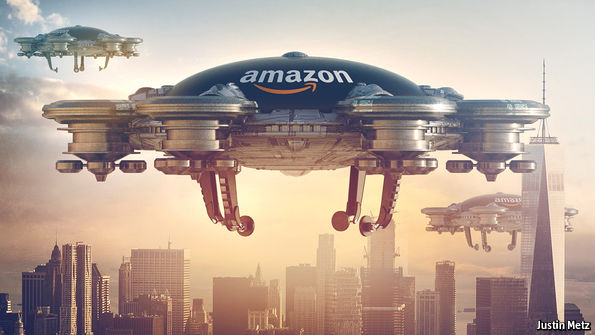AMAZON [stckqut]AMZN[/stckqut] is an extraordinary company. The former bookseller accounts for more than half of every new dollar spent online in America. It is the world’s leading provider of cloud computing. This year Amazon will probably spend twice as much on television as HBO, a cable channel. Its own-brand physical products include batteries, almonds, suits and speakers linked to a virtual voice-activated assistant that can control, among other things, your lamps and sprinkler.
Yet Amazon’s shareholders are working on the premise that it is just getting started. Since the beginning of 2015 its share price has jumped by 173%, seven times quicker than in the two previous years (and 12 times faster than the S&P 500 index). With a market capitalisation of some $400bn, it is the fifth-most-valuable firm in the world. Never before has a company been worth so much for so long while making so little money: 92% of its value is due to profits expected after 2020.
That is because investors anticipate both an extraordinary rise in revenue, from sales of $136bn last year to half a trillion over the next decade, and a jump in profits. The hopes invested in it imply that it will probably become more profitable than any other firm in America. Ground for scepticism does not come much more fertile than this: Amazon will have to grow faster than almost any big company in modern history to justify its valuation. Can it possibly do so?
It is easy to tick off some of the pitfalls. Rivals will not stand still. Microsoft has cloud-computing ambitions; Walmart already has revenues nudging $500bn and is beefing up online. If anything happened to Jeff Bezos, Amazon’s founder and boss, the gap would be exceptionally hard to fill. But the striking thing about the company is how much of a chance it has of achieving such unprecedented goals.

